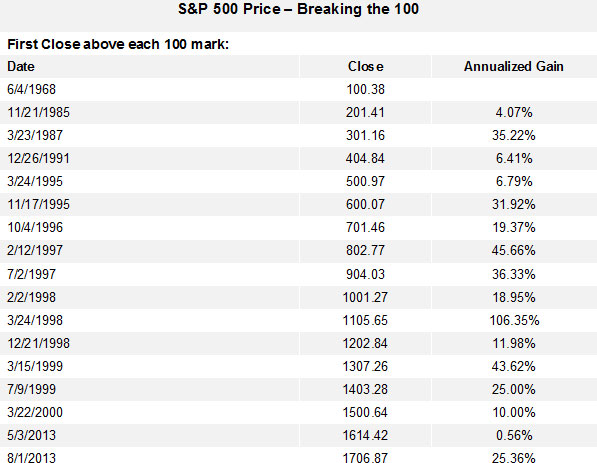Don't get tricked by stock market numerology
(MoneyWatch) Numerology can be defined as the study of the purported divine, mystical, or other special relationship between a number and some coinciding observed (or perceived) events. Numerology is often associated with the paranormal, alongside astrology and similar divinatory arts.
You might ask what numerology has to do with investing. I'd say it has about as much to do with investing as astrology (there are, in fact, many Internet sites that provide investment advice based on astrological forecasts, as silly as that sounds). Yet whenever major stock market indices cross new thresholds, the financial media tries to attach some special meaning to the event. Pundits are brought on to provide their unique insights into what their crystal balls are telling them.
This week, Nov. 18 was a field day for investment numerologists as the S&P 500, for the first time crossed the 1,800 level, and the Dow Jones industrial average crossed the 16,000 level. And now, many of those same gurus are busy commenting on what the failure of both indices to stay above those "magic numbers" portends.
In early 2012, while eating breakfast and watching CNBC, I listened as the host discussed the fact that the S&P 500 Index closed 2011 virtually exactly where it had started. Including dividends, the return was just over 2 percent. The host then noted that in the past when the market was flat, the following year was a great one for investors. She asked the guest "guru" about that. And the guru confirmed her statement, implying 2012 was likely to be a great year for investors.
When I hear comments like this, I like to go check the data. If we consider that a flat year would be total returns of between -3 percent and +3 percent, we find that since 1961, the return of the S&P 500 Index fell within that range exactly one time. That was 1994, when it returned 1.3 percent. The next year it returned 37.6 percent. So we have a grand sample of one.
The table below covers the full 85-year period from 1926-2010, but it only displays the five years when the total return of the S&P 500 Index fell between -3 percent and +3 percent.
While the average return in the year following a "flat" year was 31 percent, one should not place any significance to the data. One reason is that we just don't have enough data points -- the sample size is too small.
For those interested in numerology, the table below shows the annualized gain in years where the S&P 500 hit a new milestone (special thanks to Howard Silverblatt, senior index analyst at S&P, for providing the numbers). Not much of a pattern here.

